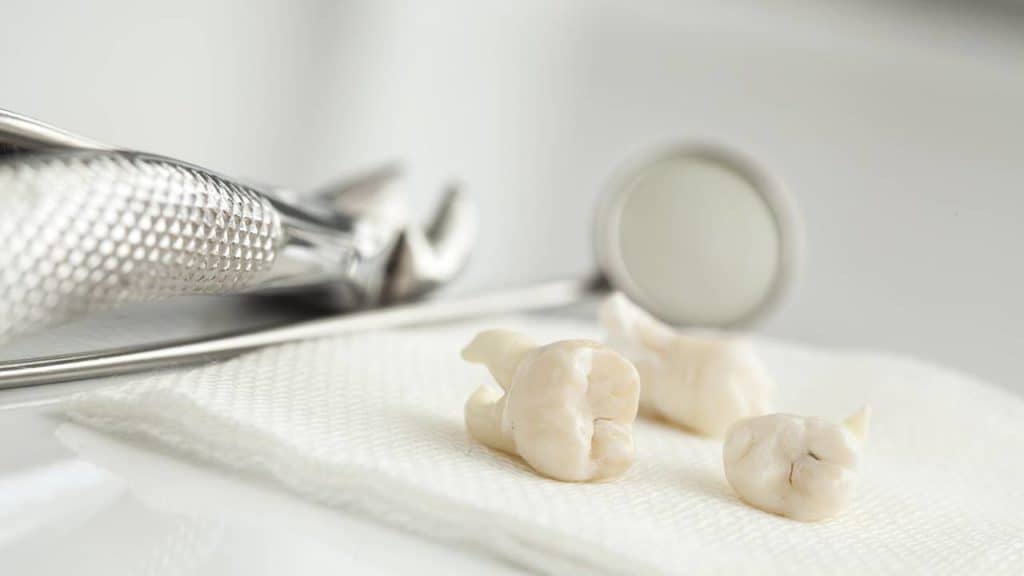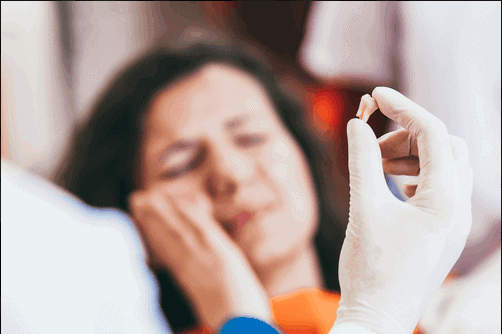You’ve recently experienced having a tooth taken out through tooth extraction treatment, and now the time has come to perform appropriate aftercare steps to avoid any future complications. Aftercare steps are critical for patients who’ve had single or multiple teeth extracted.
Here is your tooth extraction aftercare guide, designed to help you perform the right steps so that there is minimal impact thereafter for a swift recovery.
The Immediate Tooth Extraction Aftercare Steps
Immediately after tooth extraction treatment, follow these immediate aftercare steps:
-
- Bite Down On A Gauze Pad – For the tooth or set of teeth extracted, a gauze pad can help stem any internal bleeding. The surgeon will give you a gauze pad to bite down on once the procedure is finished, along with some gauze pads for you to take home as well. Replace the gauze pad the surgeon has given you and once you get home, apply it again until the bleeding stops.
- Your Mouth Will Still Feel Numb – It’s unlikely that the anesthesia you were given for the treatment will wear off after the procedure. Therefore, you’re likely to still feel some numbness in the mouth, meaning you’re unlikely to feel your lips, cheek or tongue. Be careful not to bite down on them.
- Take Over-The-Counter Medication – Pain relievers and prescribed medication can help reduce the level of pain when the local anesthesia wears off.
- Apply A Cold Compress – Apply a cold compress against the affected area for at least 15 minutes on and off throughout the day. Use an ice pack or a pack of peas.
- Reduce Mouth Activity – The blood clot needs to form at the extracted site. To avoid the blood clot being dislodged, reduce mouth activity for the first few days. This includes:
- Don’t spit or swish
- Avoid smoking
- Avoid using a straw to drink
- Avoid Physical Activity – Strenuous activity means greater pressure on the mouth. It is important that you take adequate for the first few days post-treatment.
Bleeding At The Site
Bleeding at the site of the extracted area will likely form. Using the gauze pad the surgeon has given you, bite down on it and hold it firm for at least 30 minutes or until the bleeding stops.
Swelling At The Site
When your body has gone through trauma, swelling will naturally occur. Swelling may appear a day after surgery. When this occurs, treat it as a normal reaction, and follow these steps:
- Apply a cold compress against the site for 15 minutes at a time throughout the day
- Keep your head elevated and ensure your pillow is upright at an angle upwards
- Take over-the-counter pain relief medication to alleviate any discomfort
- Change your diet to softer foods as they’re easy to eat and swallow after tooth extraction. Avoid eating chewy solids as this can disturb the blood clot.
Brushing, Flossing and Rinsing
Avoid brushing, flossing and rinsing on the day of the procedure. You can revert to it the day after but ensure you’re very careful when it comes to brushing around the extracted area. It’s recommended that you avoid it altogether.
Follow Up Appointment
You’re likely to be called in for a follow-up appointment soon after tooth extraction treatment. This is likely to occur within one to two weeks post-surgery, which will be free of charge.
If you’re seeking further support with tooth extraction aftercare, consult your dentist as soon as possible to alleviate any concerns for a faster recovery.



